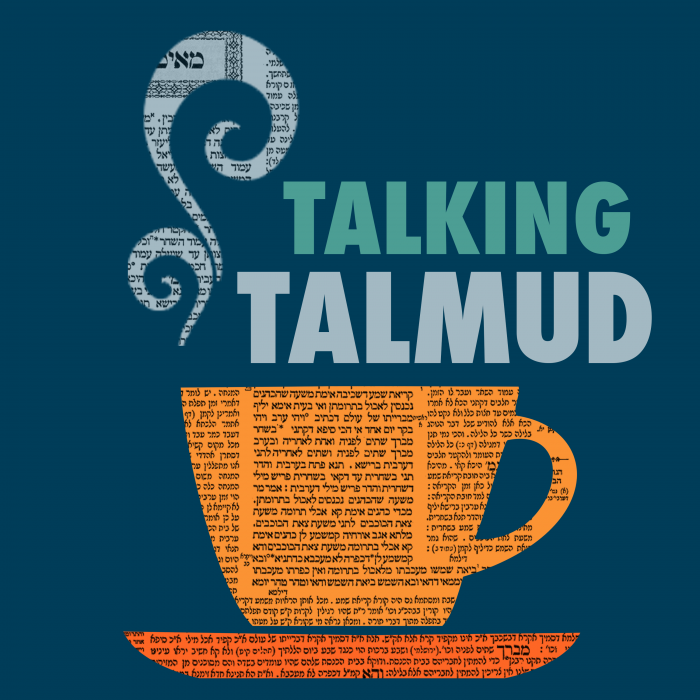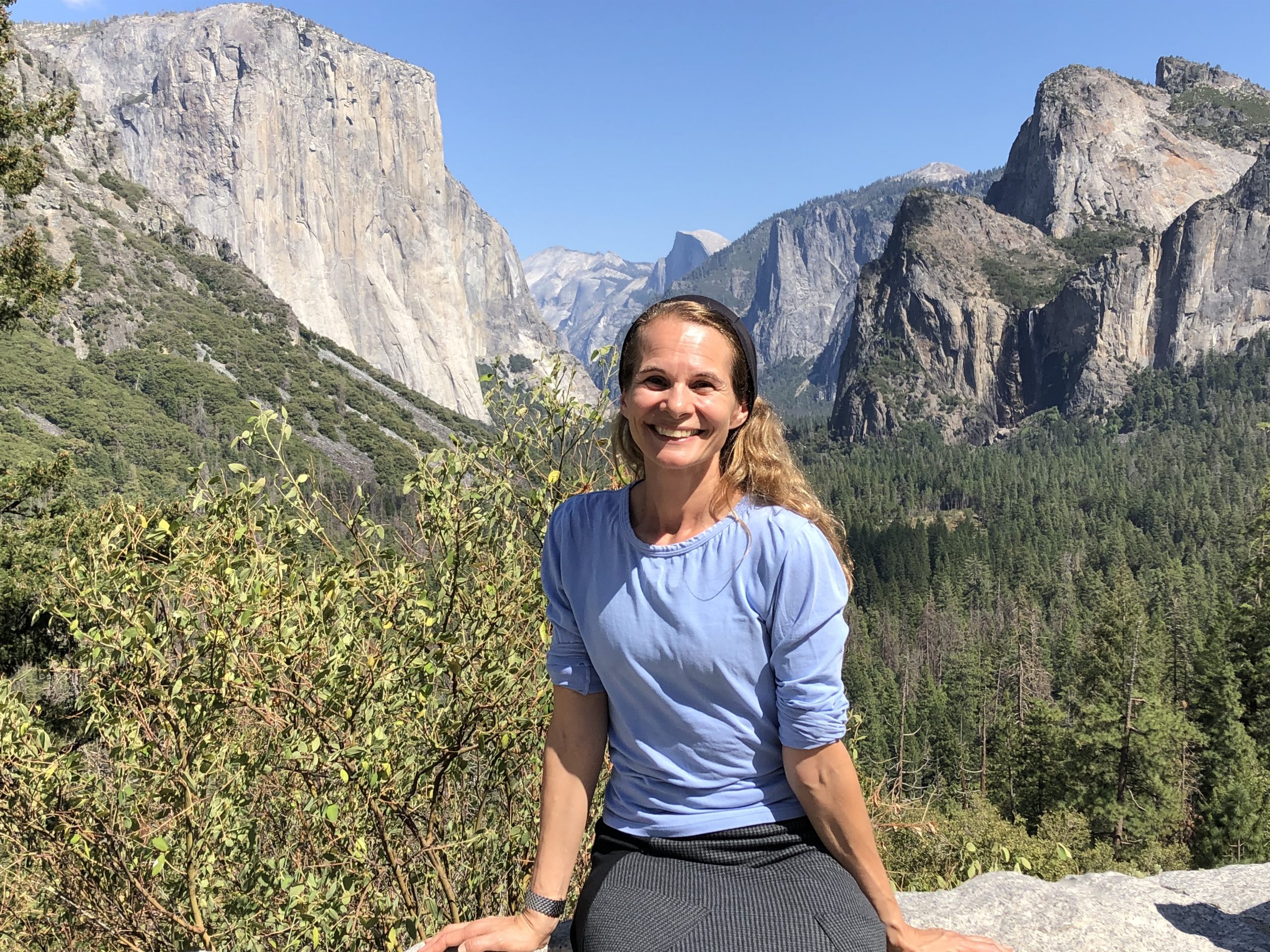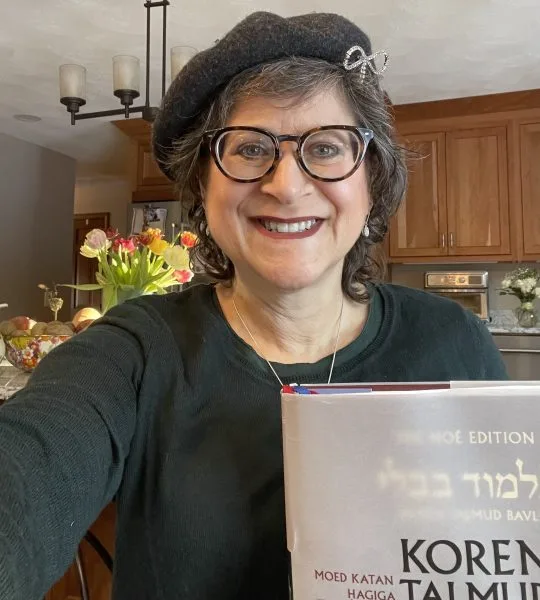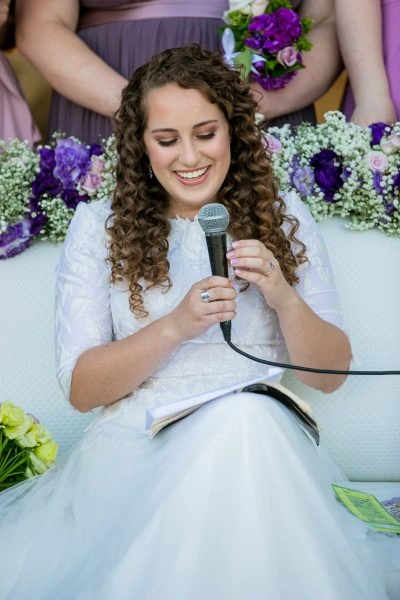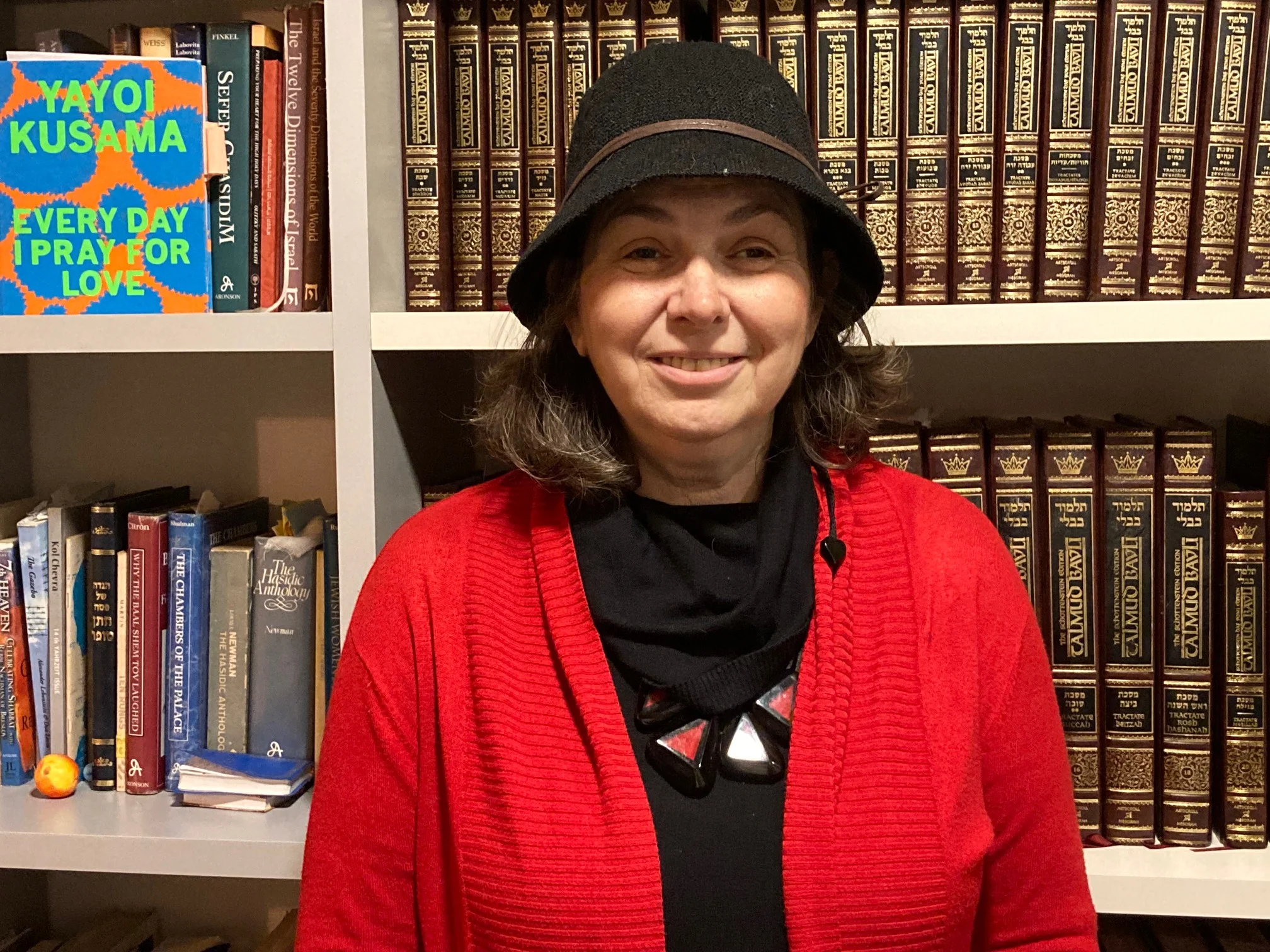Bava Batra 82
עַד שֶׁתְּהֵא לְקִיחָה וַהֲבָאָה כְּאֶחָד; וְהָא לֵיכָּא. אֲמַר לֵיהּ רַב אַחָא בְּרֵיהּ דְּרַב אַוְיָא לְרַב אָשֵׁי: מִכְּדֵי פְּסוּקֵי נִינְהוּ, לִיקְרֵי!
The passage is not recited until the taking and the bringing of the first fruits are performed by one person, and that is not the case here. Rav Aḥa, son of Rav Avya, said to Rav Ashi: Since the passage is composed of verses, let him read them. What is objectionable about reciting verses from the Torah?
אֲמַר לֵיהּ: מִשּׁוּם דְּמִחֲזֵי כְּשִׁיקְרָא. רַב מְשַׁרְשְׁיָא בְּרֵיהּ דְּרַב חִיָּיא אָמַר: דִּלְמָא אָתֵי לְאַפְקוּעִינְהוּ מִתְּרוּמָה וּמַעֲשֵׂר.
Rav Ashi said to him: The problem is due to the fact that this practice has the appearance of falsehood, because he issues a declaration before God that is possibly untrue, as he might not own the ground. Rav Mesharshiyya, son of Rav Ḥiyya, said: The declaration is not recited lest he come to remove the fruits from their obligation of teruma and tithes, if they are treated entirely as first fruits. For this reason one does not recite the passage, to ensure that their unique status is maintained.
הִגְדִּילוּ – לֹא יְשַׁפֶּה כּוּ׳. הֵיכִי דָּמֵי מִן הַגֶּזַע, וְהֵיכִי דָּמֵי מִן הַשׇּׁרָשִׁין?
§ The mishna teaches: With regard to one who buys two trees in the field of another, if the trees grew, the owner of the field may not cut down their branches. The mishna further teaches: That which grows out of the trunk belongs to the owner of the tree, but that which grows out of the roots belongs to the owner of the ground. The Gemara asks: What are the circumstances in which something is considered to be growing out of the trunk, and what are the circumstances in which it is considered to be growing out of the roots?
אָמַר רַבִּי יוֹחָנָן: כֹּל שֶׁרוֹאֶה פְּנֵי חַמָּה – זֶהוּ מִן הַגֶּזַע, וְשֶׁאֵינוֹ רוֹאֶה פְּנֵי חַמָּה – זֶהוּ מִן הַשׇּׁרָשִׁין.
Rabbi Yoḥanan said: With regard to anything that sees the face of the sun, i.e., which is visible and aboveground, this is considered to be growing out of the trunk. And with regard to that which does not see the face of the sun but is concealed in the earth, this is considered to be growing out of the roots.
וְלֵיחוּשׁ דִּלְמָא מַסְּקָא אַרְעָא שִׂירְטוֹן, וְאָמַר לֵיהּ: תְּלָתָא זַבֵּינְתְּ לִי, וְאִית לִי אַרְעָא! אֶלָּא אָמַר רַב נַחְמָן: יָקוֹץ. וְכֵן אָמַר רַבִּי יוֹחָנָן: יָקוֹץ.
The Gemara asks: But if everything that is visible belongs to the owner of the tree, no matter how close it is to the ground, let us be concerned that perhaps the land is covered with sediment from flowing water, and some of the tree’s trunk will be covered, in which case the branches that grow from the trunk will appear as though they are separate trees; and the owner of the trees will say to the owner of the field: You actually sold me three trees and I therefore have ownership over the ground. Rather, Rav Naḥman said: That which grows from the trunk belongs to the owner of the tree, but he must cut it down. And Rabbi Yoḥanan himself likewise said: The owner of the tree must cut it down.
אָמַר רַב נַחְמָן: נְקִיטִינַן, דֶּקֶל אֵין לוֹ גֶּזַע. סָבַר רַב זְבִיד לְמֵימַר: אֵין לוֹ גֶּזַע לְבַעַל דֶּקֶל, דְּכֵיוָן דִּלְמִחְפַּר וּלְשָׁרֵשׁ קָאֵי – אַסּוֹחֵי מַסַּח דַּעְתֵּיהּ.
Rav Naḥman said: We hold by tradition that a palm tree bought from another has no trunk. Rav Zevid thought to say this means that the owner of the palm tree has no right to that which grows from the trunk. The reason is that since it stands ready to be dug up and uprooted, as when the tree dies its owner is not entitled to plant another in its place, he diverts his mind from that which grows from the trunk.
מַתְקֵיף לַהּ רַב פָּפָּא: וְהָא קוֹנֶה שְׁנֵי אִילָנוֹת – דִּלְמִחְפַּר וּלְמִשְׁרַשׁ קָיְימִי, וְקָתָנֵי דְּיֵשׁ לוֹ גֶּזַע! אֶלָּא אָמַר רַב פָּפָּא: אֵין לוֹ גֶּזַע לְבַעַל דֶּקֶל, לְפִי שֶׁאֵין מוֹצִיא גֶּזַע.
Rav Pappa objects to this: But this is comparable to one who buys two trees in a field belonging to another, as the trees stand ready to be dug up and uprooted because their owner has no right to plant new trees in their place when they die; and yet it is taught in the mishna that he has the right to that which grows from the trunk. Rather, Rav Pappa said: The statement of Rav Naḥman means that the owner of a palm tree, in contrast to owners of other types of trees, has no right to that which grows from the trunk, since a palm tree does not produce branches from its trunk.
וּלְרַב זְבִיד, קַשְׁיָא מַתְנִיתִין! דְּזַבֵּין לַחֲמֵשׁ שְׁנִין.
The Gemara asks: But according to the opinion of Rav Zevid, who maintains that Rav Naḥman is referring to all types of trees, the mishna is difficult. The Gemara answers: Rav Zevid interprets the mishna as referring to a situation where the owner of the trees bought the trees for five years and stipulated that he may plant new trees in place of the original trees in the event the original ones are cut down.
קָנָה שְׁלֹשָׁה – קָנָה קַרְקַע. וְכַמָּה? אָמַר רַבִּי חִיָּיא בַּר אַבָּא אָמַר רַבִּי יוֹחָנָן: הֲרֵי זֶה קָנָה תַּחְתֵּיהֶן וּבֵינֵיהֶן, וְחוּצָה לָהֶן
§ The mishna teaches: If one bought three trees he has acquired the ground along with them. The Gemara asks: And how much of the field does he acquire? Rabbi Ḥiyya bar Abba says that Rabbi Yoḥanan says: This buyer has acquired the ground that is located underneath the trees, and the area between them, and with regard to the space outside of the trees and their branches,
כִּמְלוֹא אוֹרֶה וְסַלּוֹ. מַתְקֵיף לַהּ רַבִּי אֶלְעָזָר: הַשְׁתָּא דֶּרֶךְ אֵין לוֹ, אוֹרֶה וְסַלּוֹ יֵשׁ לוֹ?! דֶּרֶךְ אֵין לוֹ – דְּאַרְעָא אַחֲרִיתִי הִיא; אוֹרֶה וְסַלּוֹ – יֵשׁ לוֹ?!
he has acquired an area sufficient for a gatherer of figs and his basket in hand to stand close to the tree. Rabbi Elazar objects to this: Now that the halakha is that the buyer has no path and must purchase a path through the field to access his trees; if so, does he have possession of an area for the gatherer and his basket? The Gemara elaborates: He has no path, even though he has no other means of gaining access to the trees, as the ground he acquired along with the trees is considered another land and is not part of the rest of the field. Why, then, would he have possession of an area for a gatherer and his basket?
אָמַר רַבִּי זֵירָא: מִדִּבְרֵי רַבֵּינוּ נִלְמַד, שְׁלֹשָׁה – הוּא דְּאֵין לוֹ דֶּרֶךְ, הָא שְׁנַיִם – יֵשׁ לוֹ, דְּאָמַר לֵיהּ: בְּאַרְעָא דִּידָךְ קָיְימִי.
Rabbi Zeira says: From the statement, i.e., the objection, of our teacher, we learn that it is in the case of three trees that the owner of the trees has no path, as the buyer acquired a separate piece of land along with the trees. But in the case of two trees the buyer has a path, as he says to the owner of the field: My trees are standing on your land, and as I am allowed to use your field to tend to my trees I have the right to walk through your land to reach them.
אֲמַר לֵיהּ רַב נַחְמָן בַּר יִצְחָק לְרָבָא: לֵימָא רַבִּי אֶלְעָזָר לֵית לֵיהּ דִּשְׁמוּאֵל רַבֵּיהּ – דְּאָמַר שְׁמוּאֵל: הֲלָכָה כְּרַבִּי עֲקִיבָא, דְּאָמַר: מוֹכֵר בְּעַיִן יָפָה מוֹכֵר?
Rav Naḥman bar Yitzḥak said to Rava: Shall we say that Rabbi Elazar does not accept the opinion of Shmuel, who was his teacher? As Shmuel says: The halakha is in accordance with the opinion of Rabbi Akiva, who says: One who sells, sells generously. According to Rabbi Akiva, one sells in a manner that is advantageous for the buyer, and is presumed to have included in the sale even items that were not explicitly specified. In this case, as he has sold a tree that remains on his property, the seller grants the buyer the right to access his tree.
אֲמַר לֵיהּ: לָא מִתּוֹקְמָא מַתְנִיתִין כְּרַבִּי עֲקִיבָא.
Rava said to him: Even if Rabbi Elazar himself agrees with Rabbi Akiva, the mishna cannot be explained in accordance with the opinion of Rabbi Akiva. Rather, the mishna must be in accordance with the opinion of the Rabbis, who hold that one who sells does so sparingly, and the difficulty that Rabbi Elazar raised against Rabbi Yoḥanan is predicated on the fact that the mishna is in accordance with the opinion of the Rabbis.
מִמַּאי? מִדְּקָתָנֵי: הִגְדִּילוּ – יְשַׁפֶּה, וְאִי סָלְקָא דַּעְתָּךְ רַבִּי עֲקִיבָא הִיא, אַמַּאי יְשַׁפֶּה? הָאָמַר: מוֹכֵר בְּעַיִן יָפָה מוֹכֵר!
From where does Rava derive that the mishna is not in accordance with the opinion of Rabbi Akiva? From the fact that the mishna teaches: If the three trees grew, the owner of the land may cut down the branches that extend into his field. And if it enters your mind that the mishna is in accordance with the opinion of Rabbi Akiva, why may he cut them down? Doesn’t Rabbi Akiva say that one who sells, sells generously?
אֲמַר לֵיהּ: אֵימוֹר דְּאָמַר רַבִּי עֲקִיבָא – גַּבֵּי בּוֹר וָדוּת, דְּלָא מַכְחֲשִׁי אַרְעָא; גַּבֵּי אִילָן מִי שָׁמְעַתְּ לֵיהּ?
Rav Naḥman bar Yitzḥak said to him: This does not prove that the mishna is not in accordance with the opinion of Rabbi Akiva. You can say that Rabbi Akiva stated his ruling in the case of a pit and a cistern that are situated in a field belonging to another, which one sells in a generous manner, as they do not weaken the land. But did you hear him say that the seller is generous toward the buyer with regard to a tree, which can weaken the land?
מִי לָא מוֹדֵי רַבִּי עֲקִיבָא בְּאִילָן הַנּוֹטֶה לְתוֹךְ שְׂדֵה חֲבֵירוֹ, שֶׁקּוֹצֵץ מְלֹא מַרְדֵּעַ מֵעַל גַּבֵּי מַחֲרֵישָׁה?
Doesn’t Rabbi Akiva concede in the case of a tree that leans out into the field of another, in which the owner of the other field cuts down the branches until the full height of an ox-goad, the handle that protrudes over a plow? Since the extending branches impede his efforts to plow his field, it is permitted for him to cut them down. This indicates that even according to Rabbi Akiva one does not grant privileges that are detrimental to his own interests. If so, the mishna can be explained even in accordance with the opinion of Rabbi Akiva, which indicates that Rabbi Elazar does not accept his ruling.
תַּנְיָא כְּווֹתֵיהּ דְּרַבִּי חִיָּיא בַּר אַבָּא: הֲרֵי זֶה קָנָה תַּחְתֵּיהֶן וּבֵינֵיהֶן, וְחוּצָה לָהֶן כִּמְלוֹא אוֹרֶה וְסַלּוֹ.
The Gemara points out: It is taught in a baraita in accordance with the statement of Rabbi Ḥiyya bar Abba: If one buys three trees in a field belonging to another, this buyer has acquired the ground that is found underneath the trees, and the area between them, and outside of the trees and their branches an area sufficient for a gatherer of figs and his basket.
אֲמַר לֵיהּ אַבָּיֵי לְרַב יוֹסֵף: אוֹתָן אוֹרֶה וְסַלּוֹ, מִי זוֹרְעָן? אֲמַר לֵיהּ, תְּנֵיתוּהָ: הַחִיצוֹן זוֹרֵעַ אֶת הַדֶּרֶךְ.
Abaye said to Rav Yosef: Those areas around the trees that are designated for a gatherer of figs and his basket are used for this purpose only at specific times. Who sows that land during the rest of the year, the owner of the trees or the owner of the field? Rav Yosef said to him: You learned the answer in a mishna (99b): If one owns a garden that is surrounded by the garden of another, the owner of the inner garden has a right to a path through the outer garden. Even so, the owner of the outer garden may sow the path.
אֲמַר לֵיהּ: מִי דָּמֵי?! הָתָם לֵית לֵיהּ פְּסֵידָא לְלוֹקֵחַ, אֲבָל הָכָא – אִית לֵיהּ פְּסֵידָא לְלוֹקֵחַ, דַּאֲמַר לֵיהּ: קָמִיטַּנְּפִי פֵּירֵי.
Abaye said to him: Are the cases comparable? There, in the case of the outer and inner gardens, there is no loss suffered by the buyer when the owner of the outer garden sows the path, as he can still pass through it. But here, there is a loss for the buyer, as the one who bought the trees says to the owner of the field: The fruits that fall from the trees will become soiled by the plants.
הָא לָא דָּמְיָא אֶלָּא לְסֵיפָא: וְזֶה וָזֶה אֵינָן רַשָּׁאִין לְזוֹרְעָהּ.
This case is similar only to the last clause of that mishna, which states: If the owner of the inner garden is given a side path, so that he suffers a loss of some kind because he cannot take the shortest path to reach his garden, both this owner of the inner garden and that owner of the outer garden are not permitted to sow the path. Similarly, here too, neither the owner of the trees nor the owner of the field are permitted to sow the place designated for the gatherer of figs and his basket.
תַּנְיָא כְּווֹתֵיהּ דְּאַבָּיֵי: הֲרֵי זֶה קָנָה תַּחְתֵּיהֶן וּבֵינֵיהֶן, וְחוּצָה לָהֶן כִּמְלוֹא אוֹרֶה וְסַלּוֹ; וְזֶה וָזֶה אֵינָן רַשָּׁאִין לְזוֹרְעָהּ.
The Gemara comments: It is taught in a baraita in accordance with the opinion of Abaye: This buyer has acquired the ground that is found underneath the trees, and the area between them, and outside of the trees and their branches an area sufficient for a gatherer of figs and his basket. And both this owner of the field and that owner of the trees are not permitted to sow it.
וְכַמָּה יְהֵא בֵּינֵיהֶן? רַב יוֹסֵף אָמַר רַב יְהוּדָה אָמַר שְׁמוּאֵל: מֵאַרְבַּע אַמּוֹת וְעַד שְׁמוֹנֶה. רָבָא אָמַר רַב נַחְמָן אָמַר שְׁמוּאֵל: מִשְּׁמוֹנֶה וְעַד שֵׁשׁ עֶשְׂרֵה. אֲמַר לֵיהּ אַבָּיֵי לְרַב יוֹסֵף: לָא תִּפְלוֹג עֲלֵיהּ דְּרַב נַחְמָן, דִּתְנַן מַתְנִיתִין כְּווֹתֵיהּ –
The Gemara inquires: And how much space must there be between the three trees for them to be considered one unit, which means that the land is acquired by the owner of the trees? Rav Yosef says that Rav Yehuda says that Shmuel says: The distance between the trees must be from four cubits to eight cubits. Rava says that Rav Naḥman says that Shmuel says: It must be from eight cubits to sixteen cubits. Abaye said to Rav Yosef: Do not disagree with Rav Naḥman, as we learned in a mishna in accordance with his opinion.
דִּתְנַן: הַנּוֹטֵעַ אֶת כַּרְמוֹ שֵׁשׁ עֶשְׂרֵה אַמָּה עַל שֵׁשׁ עֶשְׂרֵה אַמָּה, מוּתָּר לְהָבִיא זֶרַע לְשָׁם.
As we learned in a mishna (Kilayim 4:9): One who plants his vineyard sixteen cubits by sixteen cubits, i.e., he leaves sixteen cubits between each row of vines, is permitted to bring other species of seeds to the empty spaces between the rows and sow them there. This is not considered a violation of the biblical prohibition with regard to sowing diverse crops in a vineyard, which is one of the prohibitions of diverse kinds.
אָמַר רַבִּי יְהוּדָה: מַעֲשֶׂה בְּצַלְמוֹן, בְּאֶחָד שֶׁנָּטַע אֶת כַּרְמוֹ שֵׁשׁ עֶשְׂרֵה עַל שֵׁשׁ עֶשְׂרֵה אַמָּה, וְהָיָה הוֹפֵךְ שְׂעַר שְׁתֵּי שׁוּרוֹת לְצַד אֶחָד, וְזוֹרֵעַ אֶת הַנִּיר; לְשָׁנָה אַחֶרֶת הָיָה הוֹפֵךְ אֶת הַשֵּׂעָר לִמְקוֹם הַזֶּרַע, וְזָרַע אֶת הַבּוּר; וּבָא מַעֲשֶׂה לִפְנֵי חֲכָמִים וְהִתִּירוּהוּ.
Rabbi Yehuda said: There was an incident in the city of Tzalmon, where one individual planted his vineyard sixteen by sixteen cubits. And he would turn the branches of two rows that were facing each other to one side, so that there was a space of sixteen cubits between the two rows, and sow the clearing. The following year he would turn the branches to the place that was sown the year before, and would sow the land that had been left uncultivated the previous year, as it had been filled with the branches from the vines. And the incident came before the Sages and they permitted it. This demonstrates that sixteen cubits between plants is required for them to be considered separate units.
אֲמַר לֵיהּ: אֲנָא לָא יָדַעְנָא, אֶלָּא עוֹבָדָא הֲוָה
Rav Yosef said to him: I do not know about this, but there was a similar incident



